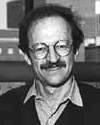
Born 18 Dec 1939.
American virologist who shared, with J. Michael Bishop, the 1989 Nobel Prize for Physiology or Medicine for their work on the origins of cancer - that cancer genes (oncogenes) can arise from normal cellular genes, called proto-oncogenes. Oncogenes are normal genes that control growth in every living cell, but which under certain conditions can turn renegade and cancerous. They believed that the growth of cancerous cells is not the result of an invasion from outside the cell, but rather a misuse of a normal gene by a retrovirus, as a result of exposure to some aggravating carcinogen, such as radiation or smoke. Their research in the mid '70s has led to great strides in the understanding, diagnosis, and treatment of a variety of cancers.
American virologist who shared, with J. Michael Bishop, the 1989 Nobel Prize for Physiology or Medicine for their work on the origins of cancer - that cancer genes (oncogenes) can arise from normal cellular genes, called proto-oncogenes. Oncogenes are normal genes that control growth in every living cell, but which under certain conditions can turn renegade and cancerous. They believed that the growth of cancerous cells is not the result of an invasion from outside the cell, but rather a misuse of a normal gene by a retrovirus, as a result of exposure to some aggravating carcinogen, such as radiation or smoke. Their research in the mid '70s has led to great strides in the understanding, diagnosis, and treatment of a variety of cancers.
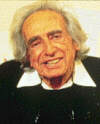
Born 18 Dec 1912; died 9 Jun 1996 at age 83.
American cell biologist who was notable for his work in nuclear and cellular physiology. His research centered on the broad question of cell reproduction, especially the division and regulation mechanisms involved in mitosis (the process by which the chromosomes within the nucleus of a cell double and divide prior to cell division). Mazia is best known for his isolation (1951, with Japanese biologist Katsuma Dan) of the mitotic apparatus, the structure responsible for cell division. This brought understanding of the mechanisms of cell division and intracellular motility. A study in the early '60s on centrosomal reproduction, an until recently unappreciated structure, led to Mazia's interest in this cell organelle and the publication of a seminal paper.
American cell biologist who was notable for his work in nuclear and cellular physiology. His research centered on the broad question of cell reproduction, especially the division and regulation mechanisms involved in mitosis (the process by which the chromosomes within the nucleus of a cell double and divide prior to cell division). Mazia is best known for his isolation (1951, with Japanese biologist Katsuma Dan) of the mitotic apparatus, the structure responsible for cell division. This brought understanding of the mechanisms of cell division and intracellular motility. A study in the early '60s on centrosomal reproduction, an until recently unappreciated structure, led to Mazia's interest in this cell organelle and the publication of a seminal paper.
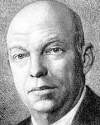
Born 18 Dec 1890; died 1 Feb 1954 at age 63. quotes
Edwin Howard Armstrong was an American electrical engineer and inventor who laid the foundation for much of modern radio and electronic circuitry. Fascinated by radio from childhood, he built a 125-foot-tall antenna in the front yard in 1910 and invented the continuous-wave transmitter (1912), the regenerative circuit (1912), superheterodyne circuits (1918), and frequency modulation for the FM radio system (1933). His inventions and developments form the backbone of radio communications as we know it. Exhausted by nonstop patent battles from the 1920s on, he took his own life. Nevertheless, he won most of the suits posthumously.[His date of death is either (EB 31 Jan 1954 or (DSB 1 Feb 1954 because his suicide occurred at some unknown time during the night between those dates.]
Edwin Howard Armstrong was an American electrical engineer and inventor who laid the foundation for much of modern radio and electronic circuitry. Fascinated by radio from childhood, he built a 125-foot-tall antenna in the front yard in 1910 and invented the continuous-wave transmitter (1912), the regenerative circuit (1912), superheterodyne circuits (1918), and frequency modulation for the FM radio system (1933). His inventions and developments form the backbone of radio communications as we know it. Exhausted by nonstop patent battles from the 1920s on, he took his own life. Nevertheless, he won most of the suits posthumously.[His date of death is either (EB 31 Jan 1954 or (DSB 1 Feb 1954 because his suicide occurred at some unknown time during the night between those dates.]
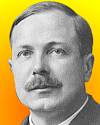
Born 18 Dec 1887; died 31 Dec 1962 at age 75. quotes
English mathematical physicist, grandson of Charles Darwin, who was director of the National Physical Laboratory (1938-1949), which he helped reorganise after WW II. After retiring, he wrote The Next Million Years, a pessimistic study of the sociological implications of the population explosion from an eugenics standpoint. From 1953 until his death, he was president of the Eugenics Society.
English mathematical physicist, grandson of Charles Darwin, who was director of the National Physical Laboratory (1938-1949), which he helped reorganise after WW II. After retiring, he wrote The Next Million Years, a pessimistic study of the sociological implications of the population explosion from an eugenics standpoint. From 1953 until his death, he was president of the Eugenics Society.
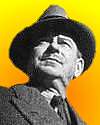
Born 18 Dec 1883; died 5 Dec 1960 at age 76.
American industrial designer who pioneered in the establishment of industrial design as a profession in the United States. Teague designed cameras for Eastman Kodak and Polaroid, glassware for Steuben, interior designs, and many other items such as flat irons and radios. He designed the old-style Texaco gas stations, the ones that were painted white with forest-green streamline stripes and a free-standing post bearing the red Texaco star logo on a white disk, which were built alike over America.
American industrial designer who pioneered in the establishment of industrial design as a profession in the United States. Teague designed cameras for Eastman Kodak and Polaroid, glassware for Steuben, interior designs, and many other items such as flat irons and radios. He designed the old-style Texaco gas stations, the ones that were painted white with forest-green streamline stripes and a free-standing post bearing the red Texaco star logo on a white disk, which were built alike over America.
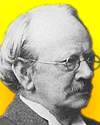
Born 18 Dec 1856; died 30 Aug 1940 at age 83. quotes
Joseph John Thomson was an English physicist who helped revolutionize the knowledge of atomic structure by his discovery of the electron (1897). He received the Nobel Prize for Physics in 1906 and was knighted in 1908. Thomson experimented with currents of electricity inside empty glass tubes, investigating a long-standing puzzle known as “cathode rays.” His experiments prompted him to make a bold proposal: these mysterious rays are streams of particles much smaller than atoms. He called these particles “corpuscles,” and suggested that they might make up all of the matter in atoms. It was startling to imagine particles inside the atom at a time when most people thought that the atom was indivisible, the most fundamental unit of matter.
Joseph John Thomson was an English physicist who helped revolutionize the knowledge of atomic structure by his discovery of the electron (1897). He received the Nobel Prize for Physics in 1906 and was knighted in 1908. Thomson experimented with currents of electricity inside empty glass tubes, investigating a long-standing puzzle known as “cathode rays.” His experiments prompted him to make a bold proposal: these mysterious rays are streams of particles much smaller than atoms. He called these particles “corpuscles,” and suggested that they might make up all of the matter in atoms. It was startling to imagine particles inside the atom at a time when most people thought that the atom was indivisible, the most fundamental unit of matter.
J.J. Thompson And The Discovery Of The Electron, by E. A. Davis and Isabel Falconer. - book suggestion.
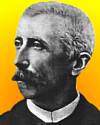
Born 18 Dec 1839; died 9 Dec 1916 at age 76. quotes
French psychologist who pioneered in experimental psychology and conducted influential psychpathological studies. His endeavour to account for memory loss as a symptom of progressive brain disease was published in his Les Maladies de la mémoire (1881; Diseases of Memory), constitutes the most influential early attempt to analyze abnormalities of memory in terms of physiology. Ribot was instrumental in introducing dynamic psychology in France. In 1885 Ribot was appointed to teach the first course in experimental psychology offered by the Sorbonne, at the University of Paris.
French psychologist who pioneered in experimental psychology and conducted influential psychpathological studies. His endeavour to account for memory loss as a symptom of progressive brain disease was published in his Les Maladies de la mémoire (1881; Diseases of Memory), constitutes the most influential early attempt to analyze abnormalities of memory in terms of physiology. Ribot was instrumental in introducing dynamic psychology in France. In 1885 Ribot was appointed to teach the first course in experimental psychology offered by the Sorbonne, at the University of Paris.
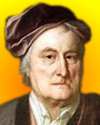
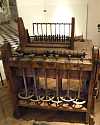
Swedish inventor who, during 1693-1709, harnessed water power to mechanize the Falun copper mine. In 1700, he erected a water-powered factory at Stjaernsund to manufacture tools, knives, locks and clocks. There, he implemented the use of hoists and conveyor belts to save manual labour, and notable introduced a division of labour among manufacturing tasks, centuries before the production line methods pioneered by Henry Ford. His cutting machine for gears for clocks has been cited as the world's first automatic machine tool. He created a number of wooden models illustrating technical design elements, known as his Mechanical Alphabet. In England, Polhem built a minting machine for King George I. In 2003, Polhem was honoured with his image on a Swedish 500 Kroner bank note.«[He was born as Christopher Polhammar, but after being ennobled, is known as Christopher Polhem. Image right: Polhem's automatic gear cutting machine displayed at the Tekniska Museet in Stockholm.]
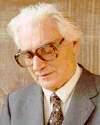
Died 18 Dec 1995 at age 85 (born 22 Jun 1910).
German engineer who in 1941 constructed the first fully operational program-controlled electromechanical binary calculating machine, or digital computer, called the Z3. Earlier, Zuse developed and built the Z1 the first binary digital computer in the world (1936-8) and two more machines before the end of WW II, but he was unable to convince the Nazi government to support his work. He created a basic programming system known as Plankalkül with which he designed a chess playing program.The Z3 was destroyed in 1944 during the war. Next came the more sophisticated Z4, which was the only Zuse Z-machine to survive the war, by several moves to new locations away from air raids. During the last days of war it was hidden. In 1950, he took it to Zurich.
German engineer who in 1941 constructed the first fully operational program-controlled electromechanical binary calculating machine, or digital computer, called the Z3. Earlier, Zuse developed and built the Z1 the first binary digital computer in the world (1936-8) and two more machines before the end of WW II, but he was unable to convince the Nazi government to support his work. He created a basic programming system known as Plankalkül with which he designed a chess playing program.The Z3 was destroyed in 1944 during the war. Next came the more sophisticated Z4, which was the only Zuse Z-machine to survive the war, by several moves to new locations away from air raids. During the last days of war it was hidden. In 1950, he took it to Zurich.
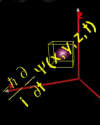
Died 18 Dec 1995 at age 86 (born 22 Mar 1909).
American-Israeli theoretical physicist who in 1935 collaborated with Albert Einstein and Boris Podolsky on a much-debated refutation of the theory of quantum mechanics; he later came to accept the theory. The famous Einstein-Podolsky-Rosen critique of quantum mechanics was published in the 1935 Physical Review. (A New York Times obituary described The Physical Review as “one of the most impenetrable periodicals in the English language.”) Rosen founded the Institute of Physics at Technion in Haifa.
American-Israeli theoretical physicist who in 1935 collaborated with Albert Einstein and Boris Podolsky on a much-debated refutation of the theory of quantum mechanics; he later came to accept the theory. The famous Einstein-Podolsky-Rosen critique of quantum mechanics was published in the 1935 Physical Review. (A New York Times obituary described The Physical Review as “one of the most impenetrable periodicals in the English language.”) Rosen founded the Institute of Physics at Technion in Haifa.
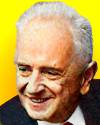
Died 18 Dec 1975 at age 75 (born 25 Jan 1900). quotes
Ukrainian-American geneticist and evolutionist whose work had a major influence on 20th-century thought and research on genetics and evolutionary theory. He made the first significant synthesis of Charles Darwin's theory of evolution with Gregor Mendel's theory of genetics in his book Genetics and the Origin of Species (1937). From 1918 his research gave experimental evidence that genes could vary far more than geneticists had previously believed. Thus, successful species tend to have a wide variety of genes that, while redundant in its present environment, do provide a species as a whole with genetic diversity. Such diversity enables the species to adapt effectively to changes in the surrounding environment—the basis for modern evolutionary theory.
Ukrainian-American geneticist and evolutionist whose work had a major influence on 20th-century thought and research on genetics and evolutionary theory. He made the first significant synthesis of Charles Darwin's theory of evolution with Gregor Mendel's theory of genetics in his book Genetics and the Origin of Species (1937). From 1918 his research gave experimental evidence that genes could vary far more than geneticists had previously believed. Thus, successful species tend to have a wide variety of genes that, while redundant in its present environment, do provide a species as a whole with genetic diversity. Such diversity enables the species to adapt effectively to changes in the surrounding environment—the basis for modern evolutionary theory.
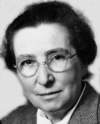
1952
Died 18 Dec 1968 at age 76 (born 5 May 1892).
English archaeologist who, between the wars, dominated a string of pioneering excavations in the Near East (1929-34), most notably the 22 month excavation at Mount Carmel, Palestine, which put Near Eastern prehistory on the map. The Mount Carmel cave deposits spanned 200,000 years of human occupation, and finds included over 92,000 stone tools. Most important were the finds of human fossils, including the skeleton of a female Neanderthal dated c. 110,000 BC, the first ever to be found outside Europe. This led on to the discovery of more skeletal remains of primary importance to the study of human evolution. A leading authority on the Paleolithic for many years, Garrod was the first woman to receive a professorship at the University of Cambridge (1939-52).
English archaeologist who, between the wars, dominated a string of pioneering excavations in the Near East (1929-34), most notably the 22 month excavation at Mount Carmel, Palestine, which put Near Eastern prehistory on the map. The Mount Carmel cave deposits spanned 200,000 years of human occupation, and finds included over 92,000 stone tools. Most important were the finds of human fossils, including the skeleton of a female Neanderthal dated c. 110,000 BC, the first ever to be found outside Europe. This led on to the discovery of more skeletal remains of primary importance to the study of human evolution. A leading authority on the Paleolithic for many years, Garrod was the first woman to receive a professorship at the University of Cambridge (1939-52).
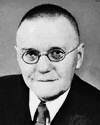
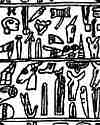
Czech archaeologist and linguist who, working with cuneiform tablets from Hattusas, deciphered the Hittite language. His first archeological fieldwork was in Palestine (1904). In 1913, he collaborated in deciphering the cuneiform languages recorded in Winckler's archives from Boghazkioi, the ancient Hittite capital in central Turkey. Hrozny maintained that Hittite was an Indo-European language, and he published his translations in 1917. His work on the cuneiform documents derived from the Assyrian merchants at Kultepe revealed the political and economic conditions in the Near East prior to 2000 B.C. In 1934, he travelled widely in Asia Minor studying heiroglyphics. He excavated Hittite sites in Turkey, including ancient Kanesh.«[Image right: detail of Cuneiform inscription from Bedrich Hrozny's notes.]
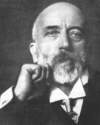
Died 18 Dec 1936 at age 79 (born 23 Jan 1857).
Croatian meteorologist and geophysicist who discovered the boundary between the Earth's crust and mantle, a boundary now named the Mohorovicic discontinuity. In 1901 he was appointed head of the complete meteorological service of Croatia and Slavonia, he gradually extended the activities of the observatory to other fields of geophysics: seismology, geomagnetism and gravitation. After the Pokuplje (Kupa Valley) earthquake of 8 Oct 1909, he analyzed the spreading of seismic waves with shallow depths through the Earth. From these, he was the first to establish, on the basis of seismic waves, a surface of velocity discontinuity separating the crust of the Earth from the mantle, now known as the Mohorovicic discontinuity.
Croatian meteorologist and geophysicist who discovered the boundary between the Earth's crust and mantle, a boundary now named the Mohorovicic discontinuity. In 1901 he was appointed head of the complete meteorological service of Croatia and Slavonia, he gradually extended the activities of the observatory to other fields of geophysics: seismology, geomagnetism and gravitation. After the Pokuplje (Kupa Valley) earthquake of 8 Oct 1909, he analyzed the spreading of seismic waves with shallow depths through the Earth. From these, he was the first to establish, on the basis of seismic waves, a surface of velocity discontinuity separating the crust of the Earth from the mantle, now known as the Mohorovicic discontinuity.
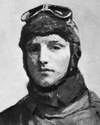
(EB)
Died 18 Dec 1919 at age 27 (born 6 Nov 1892).
British aviator who as pilot, with his fellow British aviator Arthur Brown as navigator, completed the first nonstop transatlantic flight on 15 Jun 1919. Alcock served with the Royal Naval Air Service and was considered one of their best pilots. In the WW I, he flew numerous missions over Turkish enemy lines, winning a DSC for a solo attack on three Turkish planes (1917). Alcock and Brown took off on 14 Jun 1919 in a twin-engine Vickers Vimy, a converted bomber from Lester's Field near St. John's, Newfoundland. They landed the plane in a bog near Clifden, Ireland, the next day, having flown 1,950 miles in 16h 27m averaging 118 mph. They received a prize of £10,000 from the Daily Mail newspaper and were knighted. He died in an air crash six months after his transatlantic flight.
British aviator who as pilot, with his fellow British aviator Arthur Brown as navigator, completed the first nonstop transatlantic flight on 15 Jun 1919. Alcock served with the Royal Naval Air Service and was considered one of their best pilots. In the WW I, he flew numerous missions over Turkish enemy lines, winning a DSC for a solo attack on three Turkish planes (1917). Alcock and Brown took off on 14 Jun 1919 in a twin-engine Vickers Vimy, a converted bomber from Lester's Field near St. John's, Newfoundland. They landed the plane in a bog near Clifden, Ireland, the next day, having flown 1,950 miles in 16h 27m averaging 118 mph. They received a prize of £10,000 from the Daily Mail newspaper and were knighted. He died in an air crash six months after his transatlantic flight.
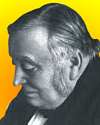
Died 18 Dec 1915 at age 82 (born 7 Jan 1833). quotes
English chemist who founded the Manchester school of chemistry after he became chair of chemistry at Owens College (1857), four years after earning his Ph.D. He greatly improved science education there, implementing some teaching methods he learned while studying at Heidelberg under Wilhelm Bunsen. In his 30 years at Owens, he brought the college from the brink of extinction to an institution where original research by students and demonstrators produced 120 published papers. Roscoe joined in research with Bunsen, from 1855 to 1862, on the laws of photochemical action. In 1865, Roscoe learnt of the presence of vanadium in a Cheshire copper mine, and began his most important original research on the rare element, and prepared pure vanadium and its oxides. He was knighted for services to education (1884).«
English chemist who founded the Manchester school of chemistry after he became chair of chemistry at Owens College (1857), four years after earning his Ph.D. He greatly improved science education there, implementing some teaching methods he learned while studying at Heidelberg under Wilhelm Bunsen. In his 30 years at Owens, he brought the college from the brink of extinction to an institution where original research by students and demonstrators produced 120 published papers. Roscoe joined in research with Bunsen, from 1855 to 1862, on the laws of photochemical action. In 1865, Roscoe learnt of the presence of vanadium in a Cheshire copper mine, and began his most important original research on the rare element, and prepared pure vanadium and its oxides. He was knighted for services to education (1884).«
The Life & Experiences of Sir Henry Enfield Roscoe, by Henry Enfield Roscoe. - book suggestion.
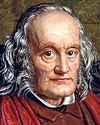
Died 18 Dec 1892 at age 88 (born 20 Jul 1804). quotes
English zoologist, anatomist and palaeontologist who is remembered for contributions to the study of fossil animals but firm opposition to Charles Darwin’s views. He created the word dinosaur meaning “terrible reptile” (1841). Owen melded the anatomical work of Frenchmen Georges Cuvier and Étienne Geoffroy Saint-Hilaire, and others, with German philosophy on the subject to form a “higher” transcendental anatomy to better describe the morphological laws of animal development. He coined terms, such as homology, still used in anatomy and evolutionary biology. In 1856, he became Superintendent of the British Museum of Natural History. He was the impetus for building a new museum in South Kensington for its burgeoning collection.«Image: Detail from portrait by William Holman Hunt. more
English zoologist, anatomist and palaeontologist who is remembered for contributions to the study of fossil animals but firm opposition to Charles Darwin’s views. He created the word dinosaur meaning “terrible reptile” (1841). Owen melded the anatomical work of Frenchmen Georges Cuvier and Étienne Geoffroy Saint-Hilaire, and others, with German philosophy on the subject to form a “higher” transcendental anatomy to better describe the morphological laws of animal development. He coined terms, such as homology, still used in anatomy and evolutionary biology. In 1856, he became Superintendent of the British Museum of Natural History. He was the impetus for building a new museum in South Kensington for its burgeoning collection.«Image: Detail from portrait by William Holman Hunt. more
Richard Owen: Biology without Darwin, by Nicolaas A. Rupke. - book suggestion.
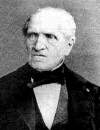
Died 18 Dec 1880 at age 87 (born 15 Nov 1793). quotes
French mathematician who, independently of the Swiss-German mathematician Jakob Steiner, elaborated the theory of modern projective geometry, the study of the properties of a geometric line or plane figure that remain unchanged when the figure is projected onto a plane from a point not on either the plane or the figure. In his text Traité de géométrie in 1852 Chasles discusses cross ratio, pencils and involutions, all notions which he introduced. Chasles was the victim of a celebrated fraud paying the equivalent of £20,000 for various letters from famous men of science and others which turned out to be forged.
French mathematician who, independently of the Swiss-German mathematician Jakob Steiner, elaborated the theory of modern projective geometry, the study of the properties of a geometric line or plane figure that remain unchanged when the figure is projected onto a plane from a point not on either the plane or the figure. In his text Traité de géométrie in 1852 Chasles discusses cross ratio, pencils and involutions, all notions which he introduced. Chasles was the victim of a celebrated fraud paying the equivalent of £20,000 for various letters from famous men of science and others which turned out to be forged.
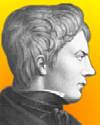
Died 18 Dec 1855 at age 52 (born 29 Sep 1803). quotes
French mathematician whose work resulted in Sturm's theorem, an important contribution to the theory of equations. While a tutor of the de Broglie family in Paris (1823-24), Sturm met many of the leading French scientists and mathematicians. In 1826, with Swiss engineer Daniel Colladon, he made the first accurate determination of the velocity of sound in water. A year later wrote a prizewinning essay on compressible fluids. Since the time of René Descartes, a problem had existed of finding the number of solutions of a given second-order differential equation within a given range of the variable. Sturm provided a complete solution to the problem with his theorem which first appeared in Mémoire sur la résolution des équations numériques (1829; “Treatise on Numerical Equations”). Those principles have been applied in the development of quantum mechanics, as in the solution of the Schrödinger equation and its boundary values.
French mathematician whose work resulted in Sturm's theorem, an important contribution to the theory of equations. While a tutor of the de Broglie family in Paris (1823-24), Sturm met many of the leading French scientists and mathematicians. In 1826, with Swiss engineer Daniel Colladon, he made the first accurate determination of the velocity of sound in water. A year later wrote a prizewinning essay on compressible fluids. Since the time of René Descartes, a problem had existed of finding the number of solutions of a given second-order differential equation within a given range of the variable. Sturm provided a complete solution to the problem with his theorem which first appeared in Mémoire sur la résolution des équations numériques (1829; “Treatise on Numerical Equations”). Those principles have been applied in the development of quantum mechanics, as in the solution of the Schrödinger equation and its boundary values.
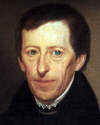
Died 18 Dec 1848 at age 67 (born 5 Oct 1781). quotes
Czech mathematician and theologian who made significant contributions to both mathematics and the theory of knowledge. He provided a more detailed proof for the binomial theorem in 1816 and suggested the means of distinguishing between finite and infinite classes. Bolzano helped to establish the foundations of analysis (for example, the Bolzano-Weierstrass theorem), attempted to elaborate mathematical method, and anticipated some basic ideas of Cantor's set theory. His major work, Wissenschaftslehre (1837), contains various contributions to logic and semantics concerning the relations of compatibility, derivability, and consequence, the deduction theorem, and the logic of classes, entailment, and probability.Name also spelled Bernard.
Czech mathematician and theologian who made significant contributions to both mathematics and the theory of knowledge. He provided a more detailed proof for the binomial theorem in 1816 and suggested the means of distinguishing between finite and infinite classes. Bolzano helped to establish the foundations of analysis (for example, the Bolzano-Weierstrass theorem), attempted to elaborate mathematical method, and anticipated some basic ideas of Cantor's set theory. His major work, Wissenschaftslehre (1837), contains various contributions to logic and semantics concerning the relations of compatibility, derivability, and consequence, the deduction theorem, and the logic of classes, entailment, and probability.Name also spelled Bernard.
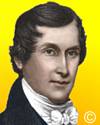
Died 18 Dec 1834 at age 44 (born 8 Sep 1790). quotes
American civil engineer assisted Benjamin Wright in the construction of the Erie Canal from 1816. To prepare for building the canal, in late 1817, White travelled extensively in Great Britain visiting canals and learning construction methods. With this experience, on his return, he was Wright's principal assistant. Building locks required a hydraulic cement as mortar between the stones. Because of the high cost to import it from England, White investigated making cement from local limestone. He found rock near the canal route in Madison County was very suitable. He obtained a the first U.S. patent for waterproof cement on 1 Feb 1820. White was consulting engineer for many other canal projects, but retired young due to poor health, and died shortly after at age 44.« more
American civil engineer assisted Benjamin Wright in the construction of the Erie Canal from 1816. To prepare for building the canal, in late 1817, White travelled extensively in Great Britain visiting canals and learning construction methods. With this experience, on his return, he was Wright's principal assistant. Building locks required a hydraulic cement as mortar between the stones. Because of the high cost to import it from England, White investigated making cement from local limestone. He found rock near the canal route in Madison County was very suitable. He obtained a the first U.S. patent for waterproof cement on 1 Feb 1820. White was consulting engineer for many other canal projects, but retired young due to poor health, and died shortly after at age 44.« more
Great Engineers and Pioneers in Technology, Vol. 1, by Roland Turner and Steven L. Goulden (eds.). - book suggestion.
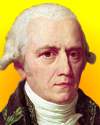
Died 18 Dec 1829 at age 85 (born 1 Aug 1744). quotes
Pioneer French biologist and pre-Darwinian evolutionist who proposed that acquired traits are inheritable (Lamarckism), which was replaced by Darwinian theory. After time as an army officer, and as a worker in a bank, Lamarck became interested in medicine and botany. He wrote Flore française (French Flora, 1773), became keeper of the royal garden (1774), and professor of invertebrate zoology at the Museum of Natural History, Paris (1793). His scientific theories on heredity published in Philosophie zoologique (1809), were largely ignored or attacked at the time. His speculative theory was that acquired traits are inheritable (such as giraffes who, he said, through stretching to reach tall trees, make their necks longer, and then pass on longer necks to their offspring.) The Lamarck system of classification for invertebrate animals was published in his Histoire naturelle des animaux sans vertebres (7 vols, 1815-22). Lamarck’s speculations about the physical and natural world found little favour among his contemporaries and he died blind and in poverty. Darwin, however, writing in 1861 recognized his efforts for initiating interest in the idea of evolution.
Pioneer French biologist and pre-Darwinian evolutionist who proposed that acquired traits are inheritable (Lamarckism), which was replaced by Darwinian theory. After time as an army officer, and as a worker in a bank, Lamarck became interested in medicine and botany. He wrote Flore française (French Flora, 1773), became keeper of the royal garden (1774), and professor of invertebrate zoology at the Museum of Natural History, Paris (1793). His scientific theories on heredity published in Philosophie zoologique (1809), were largely ignored or attacked at the time. His speculative theory was that acquired traits are inheritable (such as giraffes who, he said, through stretching to reach tall trees, make their necks longer, and then pass on longer necks to their offspring.) The Lamarck system of classification for invertebrate animals was published in his Histoire naturelle des animaux sans vertebres (7 vols, 1815-22). Lamarck’s speculations about the physical and natural world found little favour among his contemporaries and he died blind and in poverty. Darwin, however, writing in 1861 recognized his efforts for initiating interest in the idea of evolution.
Lamarck’s Open Mind: The Lectures, by Jean-Baptiste Lamarck. - book suggestion.

Umi-hotaru
In 1997, the 15-kilometer (9.3-mile) toll expressway, Tokyo Bay Aqualine bridge and tunnel that spans the narrowest gap of Tokyo Bay, opened to traffic after 31 years of studies. It connects the cities of Kawasaki and Kisarazu. The project took 8-1/2 years to complete and cost $17 billion. Total length: 15.1 km (9.38 mi) includes a 4.4-km (2.7 mi) bridge, a 9.5-km (5.9 mi) shield tunnel, and two artificial islands. It has the world's longest undersea tunnel, running 60 meters (197 feet) deep under the surface of the water. An artificial island, Umi-hotaru, connects the bridge and tunnel portions, as a parking, rest area and tourist attraction, offshore in Tokyo Bay. Previously, the trip required a 1 hr ferry or 100 km (62.1 miles) drive.
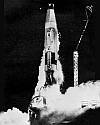
In 1958, the first American communications satellite was launched. Project SCORE (Signal Communication by Orbiting Relay Equipment) was put into orbit from Cape Canaveral using an Atlas B missile, also the first successful trial of the Atlasas a space launch vehicle. The entire rocket was placed into low orbit with the communications equipment integrated into the fairing pods of the missile. The low orbit limited life expectancy of the satellite to only 2 to 3 weeks, thus limiting opportunities for realtime relay between two ground stations. Therefore, a storeandforward mode was added by including a tape recorder, which also gave the satellite a worldwide broadcast capability - the world's first satellite to broadcast voice.[Image: An Atlas-B rocket of the type used to launch the Project SCORE satellite.]
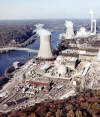
In 1957, the Shippingport Atomic Power Station in Pennsylvania, the first large-scale civilian nuclear power plant in the world first fed electricity into the grid for the Pittsburgh area. Shippingport is located on the Ohio River about 25 miles from Pittsburgh. Ground was broken in 1954 by President Dwight D. Eisenhower when the Atomic Energy Act of 1954 authorized private nuclear power production in the U.S. He made the official opening dedication on 26 May 1958, a year in which the United States would detonate 77 atomic tests, but one that would also see the first tentative test ban agreement. It was taken out of service in 1982. Decommissioning was completed in 1989.
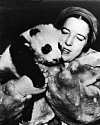
In 1936, the first giant panda infant to reach the U.S. alive, was brought back from an expedition in Tibet by Ruth Harkness, a young Manhattan socialite. A welcome diversion from the news of the Depression era, the lady and panda were a media sensation. The panda baby, named Su-Lin, appeared on the front page of the Chicago Tribune for nine consecutive days. Entrepreneurs sold toy pandas. Su-Lin was eventually acquired by Brookfield Zoo, Chicago. Shortly after their marriage, her husband, a wealthy adventurer, had left for China on an expedition to capture a panda (1934), but instead died there of throat cancer. Ruth left home to complete the quest on a remarkable adventure trekking through Tibet. (Su Lin died 1 Apr 1938.)«[Image: Ruth Harkness with Su Lin]
The Lady and the Panda: The True Adventures of Ruth Harkness..., by Vicki Constantine Croke. - book suggestion.
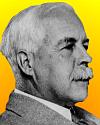
In 1926, in a letter published in Nature, G.N. Lewis coined the word "photon" when he suggested that it "would seem inappropriate to speak of one of these hypothetical entities as a particle of light, a corpuscle of light, a light quantum, or a light quant, if we are to assume that it spends only a minute fraction of its existence as a carrier of radiant energy, while the rest of the time it remains as an important structural element within the atom. It would also cause confusion to call it merely a quantum, for later it will be necessary to distinguish between the number of these entities present in an atom and the so-called quantum number. I therefore [propose for this] which is not light but plays an essential part in every process of radiation, the name photon.
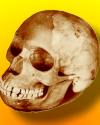
In 1912, the discovery of the skull known as Piltdown man, the first important fossil human skull ever to be unearthed in England was announced at a meeting of the Geological Society of Great Britain. Charles Dawson, steward of Barkham Manor, an attorney and secretary to the Sussex Archaeological Society; and Arthur Smith Woodward, keeper of geology at the British Museum announced their remarkable find had been made at Piltdown Common. The specimen, known as Piltdown man, occupied an honored place in the catalogues of fossil hominids for the next 40 years. But in 1953, thanks to some rigorous scholarly detective work, Piltdown man was revealed to be nothing more than a forgery, manufactured from modern human and animal remains.
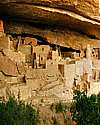
In 1888, the Cliff Palace at Mesa Verde, Colorado, was discovered by rancher Richard Wetherill. He was searching for missing cattle, following along the north side of the Mancos River when he came across site that he later named the Cliff Palace. This launched his lifetime of further archeological exploration. These ruins of the largest and most famous cliff dwelling in North America, are now preserved in Mesa Verde National Park. In the 1200s, the Anasazi, an ancient pueblo people, built 150 rooms and 23 large, round kivas (used for rituals) within a large rock shelter, high on a cliff. Rooms, about 6'×8'(2×2.5m) were constructed of sandstone blocks, with mortar made from soil, water and ash.«
Mesa Verde National Park: The First 100 Years, by Mesa Verde Museum Association. - book suggestion.
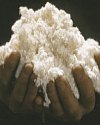
In 1854, pioneering samples of basswood pulp paper made by John Beardsley were reported in the New York Daily Times which reprinted an article from the Democrat newspaper of Buffalo, New York. The article described three varied samples of the new paper that were shown to the editor of the Buffalo newspaper. Basswood is a tree of the linden family. Paper-making materials then in use included grasses, rag and flax. To transform wood into pulp, the cellulose fibres must be separated. Beardsley used a mechanical means of revolving cutters. A later history of paper-making book stated that his results were not successful. Earlier patents had been issued to other inventors for the processing of wood pulp for paper.«
more
In 1839, John William Draper took a daguerreotype of the moon, the first celestial photograph made in the U.S. He exposed the plate for 20 minutes using a 5-inch telescope and produced an image one inch in diameter. Draper was a professor of chemistry at New York University, New York City. His research in the effect of light upon chemicals had led him to take up photography. He also made his first satisfactory photographic portrait in 1839. A picture he took (1840) of his sister is the oldest surviving photographic portrait. Draper made important scientific contributions in fields of radiant energy, photochemistry, photography, and electric telegraphy. He also anticipated development of spectrum analysis.




